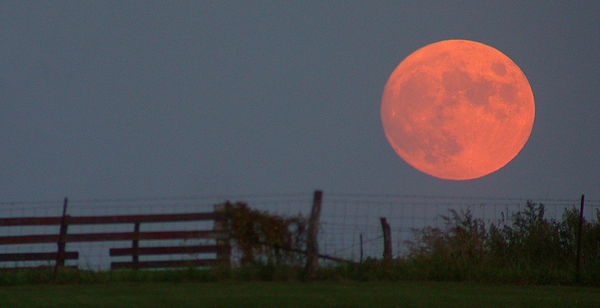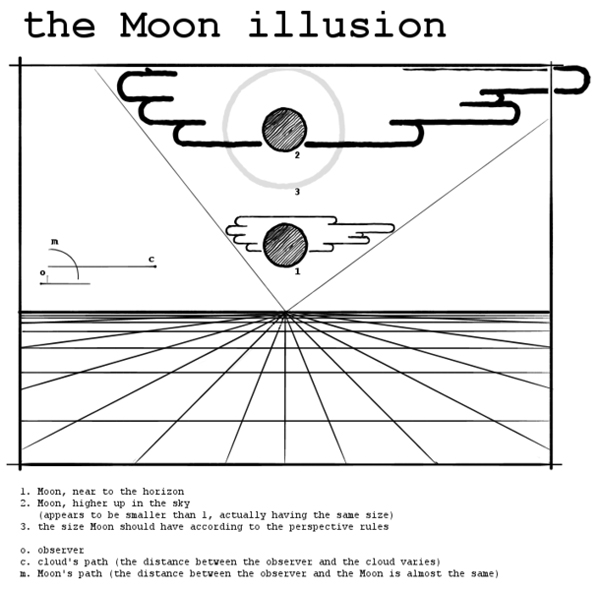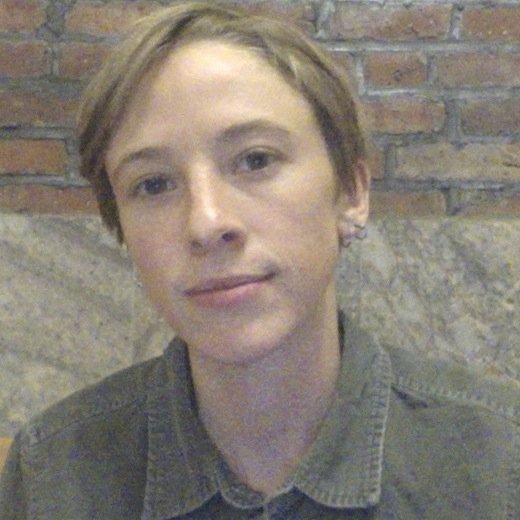Why Is the Harvest Moon Big and Red?

The Harvest Moon is the full moon nearest the date of the Autumnal Equinox. Orbiting Earth at a shallow angle to the horizon this time of year, the moon rises at around sunset for several days in a row.
Over the course of these days, the seamless transition from sunlight to moonlight provides farmers with additional time to bring crops in — and at just the right time of year for the harvest.
But the Harvest Moon provides a treat for non-farmers, too: Hanging low in the sky, it sometimes appears deep yellow or orange or even a vibrant red. [Photos: Our Changing Moon]
Shortly after the Harvest Moon rises, light from it passes sideways through more atmosphere than does moonlight coming from overhead. Atmospheric particles tend to scatter moonlight's bluish components more than its reddish components, which are allowed to penetrate through to your eye. The moon thus appears redder the more atmosphere it passes through. Its color is most dramatic on nights when the atmosphere is especially muggy or hazy.
A low-hanging moon also appears larger than a high-flying one. This is a trick of the brain known variously as the moon illusion, or Ponzo illusion, which has been observed since ancient times but still has no generally accepted explanation.
One possible cause of the moon illusion is that we're used to seeing clouds just a few miles above us, while we know that clouds on the horizon can be hundreds of miles distant. We might therefore perceive an object on the horizon as farther away no matter what it is, and because the moon on the horizon is the same size as it normally is overhead, we perceive it as being much larger.

This story was provided by Life's Little Mysteries, a sister site to SPACE.com. Follow Natalie Wolchover on Twitter @nattyover. Follow Life's Little Mysteries on Twitter @llmysteries, then join us on Facebook.
Get the Space.com Newsletter
Breaking space news, the latest updates on rocket launches, skywatching events and more!
Join our Space Forums to keep talking space on the latest missions, night sky and more! And if you have a news tip, correction or comment, let us know at: community@space.com.

Natalie Wolchover was a staff writer for Live Science and a contributor to Space.com from 2010 to 2012. She is now a senior writer and editor at Quanta Magazine, where she specializes in the physical sciences. Her writing has appeared in publications including Popular Science and Nature and has been included in The Best American Science and Nature Writing. She holds a bachelor's degree in physics from Tufts University and has studied physics at the University of California, Berkeley.










